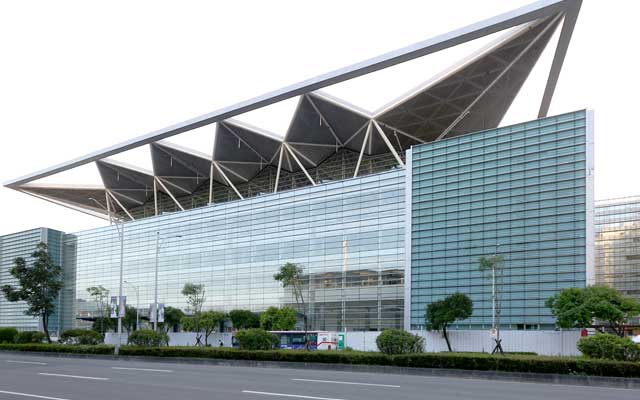Faced with growing demand for large-scale international events, Taiwan has rolled out various venue development projects to alleviate its shortage of sizeable event spaces.
As demand rises for large-scale conferences and exhibitions in Taiwan, the destination’s lack of event spaces has been thrown into sharp relief, reveal industry players there.
Philip T T Huang, executive director of Nangang International Exhibition Centre Hall 2, Taiwan External Trade Development Council (TAITRA), admitted that it has been “difficult for Taipei to bid for big international events and meetings” due to a “shortage” of larger exhibition grounds, conference halls and breakout rooms.

Taipei, the business hub and capital city of Taiwan, is currently home to only two major exhibition venues. The first is Taipei World Trade Centre (TWTC) Exhibition Halls 1 and 3, which can accommodate 1,477 and 365 booths respectively. Hall 1 has five conference rooms, while Hall 3 has just one.
The second is Taipei Nangang Exhibition Centre Hall 1, which can take in 2,467 standard booths across two indoor exhibition showgrounds and has 14 to 18 conference rooms.
The climbing popularity of Taiwan as a business destination has proved challenging for conference owners such as TAITRA, which have had to split up larger events and shuttle delegates between multiple sites.
For example, the 2018 Taipei AMPA Show, a mega international automobile and autotronics exhibition held from April 11-14, had to be divided between Taipei Nangang Exhibition Centre Hall 1 and TWTC Exhibition Hall 1.
In Kaohsiung, demand for the young four-year-old Kaohsiung Exhibition Centre (KEC) is expected to grow further since the city has been granted hosting rights for the ICCA 2020 Congress – an event that has already presented capacity challenges for KEC.
KEC can accommodate 1,500 standard booths, has 15 function rooms and can seat up to 2,000 pax in its largest room. However, this space may not be sufficient or sustainable for future growth, revealed William Liu, vice general manager, Kaohsiung Exhibition Center Corporation.
He explained: “We don’t have enough land to expand our exhibition centre. We have meeting rooms, but they may not be enough for (large) conferences. For instance, for the ICCA 2020 Congress, we will have to use special partitions on the first-floor exhibition space to convert (it) into conference rooms.”
In anticipation of this imminent shortage, the Kaohsiung City Government has tentative plans to build conference centres and smaller meeting venues around the harbour where KEC is located, shared Liu.
Taipei city is banking on the upcoming Nangang International Exhibition Centre Hall 2, the US$240 million expansion to the centre’s Hall 1, to solve the space challenge. Set to open in March 2019, Hall 2 will bring another 34,120m2 of exhibition and meeting space to Nangang. This includes a multifunctional conference hall that can be converted into 14 breakout rooms.
It will raise the centre’s total meeting room count to a maximum of 32, and total booth capacity – indoors and outdoors – to more than 5,000. Both halls will be connected to the metro by an underpass.
Huang expressed: “In the future, Nangang (district) will be the real capital for Taiwan’s MICE industry, thanks to our big exhibition space and conference rooms that can attract international events and exhibitions here.”
Future business events can also seek venue options in Taichung, an industrial city in central Taiwan. The secondary city has begun extensive works on multiple event venues across different districts, namely Houli, Fengyuan, Waipu and Shuinan. These will debut with the 2018 Taichung World Flora Exposition, to be held from November this year to April 2019. It had been originally slated only for the new Houli Horse Ranch and Forest Park Area.
When an endangered endemic leopard cat was discovered there, the Taichung City Council expanded the show to Fengyuan and Waipu, which will also receive new large-scale event venues. These are Fengyuan Huludun Park – which will house Taiwan’s longest waterside floral gallery – and Waipu Park Area.
“As what is now Taiwan’s second-largest city, Taichung is hoping to make its mark on the global map (for business events). One way we’re doing this is by developing our business events landscape, and the 2018 Taichung World Flora Exposition will serve as a good platform to attract more international visitors to Taichung,” shared Sun Chung-Hsing, senior executive officer, Taichung City Government.
After the event, Taichung’s new venues will adopt different uses. Houli Horse Ranch and Forest Park Area will become Asia’s largest equestrian competition venue; Fengyuan Huludun Park will house a pastry museum; and Waipu Park Area will become an international agricultural innovation park.
Sun added: “With this show, we have already begun to construct large facilities in Taichung to accompany the development in Shuinan.”
The Shuinan area of Taichung is concurrently being remodelled into an NT$60 billion (US$2 billion) “smart city” – a flagship project of Taichung’s Industry 4.0 initiative.
The district will soon house the Shuinan Interntional Convention Exhibition Centre, green buildings, green landscaping, automated waste collection system, rainwater recycling system and more.





















